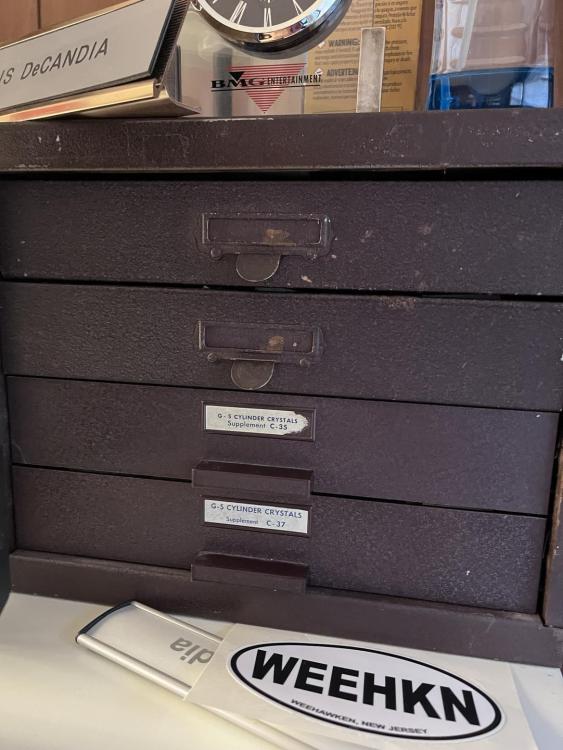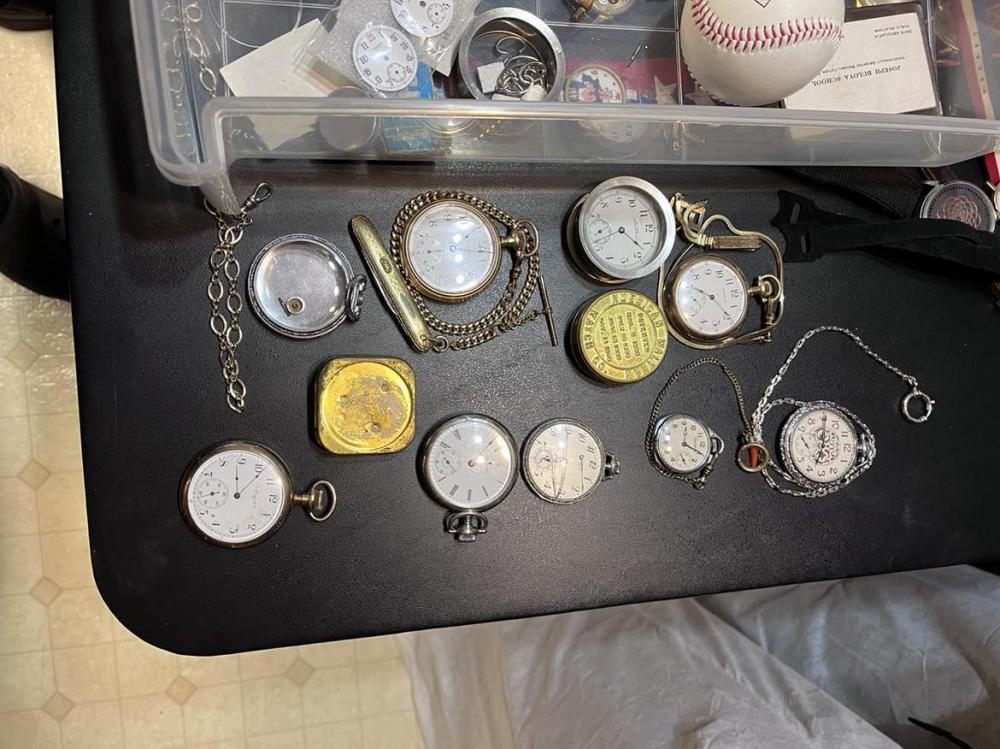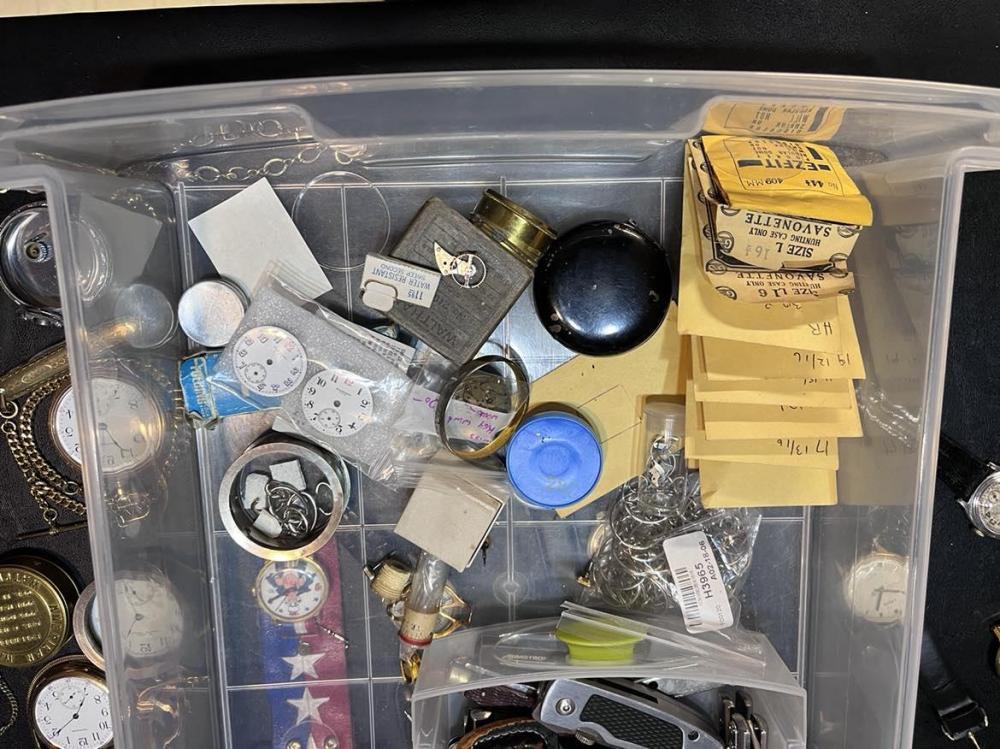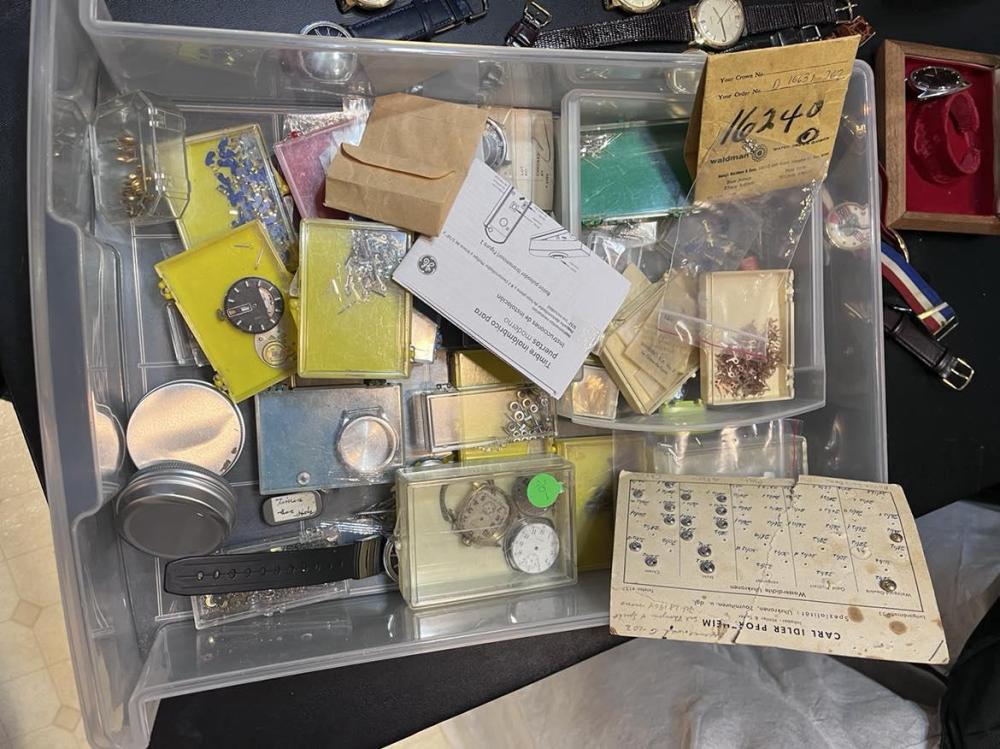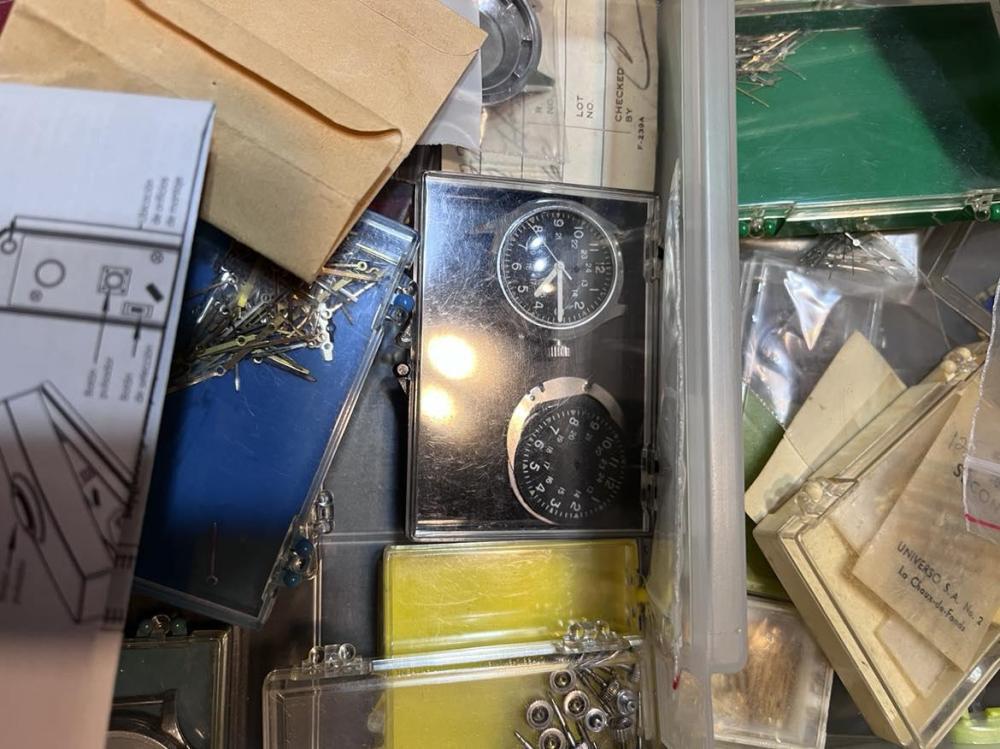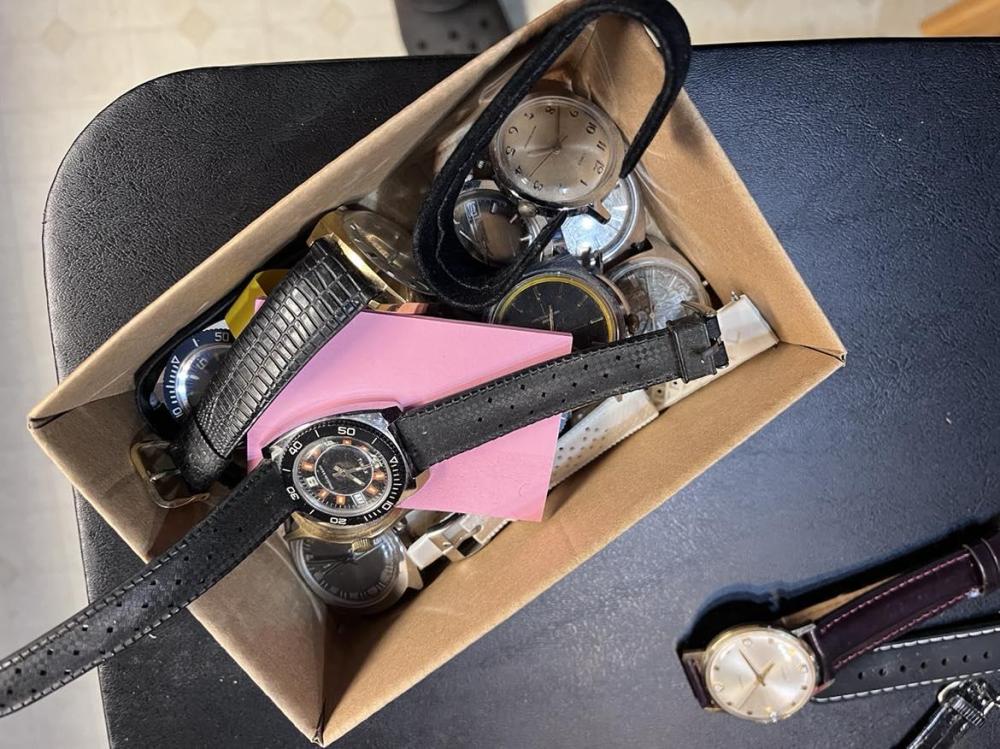Leaderboard
Popular Content
Showing content with the highest reputation on 10/09/24 in Posts
-
Cleaning method varies depending on movement type. For the basic M24 platform it is ammonia - water rinse - dry - lighter fluid - dry - lubricate. the WD - 40 is never used to lubricate, rather I use it as a rust remover yes, I'm still going to help4 points
-
4 points
-
3 points
-
3 points
-
Hi watch people, i trust we are all well. Thought a dedicated movement ID area might be useful. Not specifically for restoration advice but just somewhere were we could throw a movement size and pictures of the plate, top bridge anything with numbers or letters and keyless works at the forum so members could chip in and help with a quick search through their resources . Bit of practice for those with knowledge and lists and newbies could pick up the idea on how to find out what movement they are working on. Form something of a database, a lot of us have the bestfits for research but i have Flume and Swiss catalogs as well, some of us may have more, plus some movements are unlisted . This can take some real work to find out what they are. A one thread fits all movements identification.2 points
-
That was going to be my next question....if you were leaving the forum. Your Timex knowledge is unrivalled here... someone has a Timex issue or question is directed straight towards you. So pleased you are staying , losing such a valued member as yourself would leave a big hole in the forum.2 points
-
Same reason as any watch part Rich, sweat salt on your fingers. Finger cots And potential short circuit, salts conduct electricity2 points
-
Trust you to spot that JerseyMo will you still carry on here helping with Timex. What do you intend to do, travel and see the world.2 points
-
2 points
-
2 points
-
2 points
-
Sorry, I can only support with instructions how to do without the tool, easier than by using the tool.2 points
-
2 points
-
Ok victorian grandpa you can keep that thought but I'm gonna treat myself everyday if i can cos nobody else will, you got to look after no. 1 in this world. Someone somewhere sometime somehow is planning to shit on you, call me cynical but ita something you dont want to forger...ever2 points
-
I don't know why I was limited to a 3DPrinting forum, but oh well. I managed to grab a much coveted Meyer's No.58 Movement holder off ebay, but it only came with the second to smallest jaw inserts. Not to be detered I reverse engineered how to machine the jaw inserts. Here is the Flickr Album. https://flic.kr/s/aHBqjAGuFJ I made a small insert set as a test and then made a set for size 16s pocket watches. I'll make a few more to fill out the set. I made these from Aluminum, but might try glass-filled Delrin as an experiment The drawing could easily be used to design the jaw inserts for 3D printing in Nylon or a hard Urethane1 point
-
1 point
-
Looks like there's 1 removable link on each side. Even if all the links had been removed you'd still be able to break strap to add links back in.1 point
-
1 point
-
Congratulations on reaching retirement, and all the best with the sale! Glad to hear you are not leaving us.1 point
-
1 point
-
1 point
-
Good, I have only one Timex and haven't got around to doing anything with it. You are a valuable resource.1 point
-
Sternkreuz is the make and T 170x110x is the size. As you are in America you need to find a watch material supplier near you. It doesn't have to be Sternkreuz all you need is the size. That type of watch is known as a Ladies dress watch probably from the 1920's to early 1930's1 point
-
1 point
-
I will hold on to family pieces and a few of those which special to me. Such as a 1964 Marlin which is the model that got me started. My mentors on the old Vintage Timex Watch forum had the motto of keep them ticking for the next generation. Given my nature to want to fix things and understand how they work will lead keep me busy.1 point
-
1 point
-
Just stumbled on this topic whilst killing time, some excellent suggestions, I'll be giving some a go for sure. I've got a couple of suggestions to throw in, I've been caught out with some poor quality isopropanol before, after thorough cleaning then leaving to dry, next morning rust, and lots of it so came up with this for quick drying. It's commnly known as a greenhouse heater but this is a lot smaller for electrical enclosures (I'm an electrician so this kind of stuff lying about) everything that gets cleaned gets layed out on top, dry in minutes. Especially good when taking a balance out of renata and suspend it in the heat as I've found even renata gets sticky after enough oil contamination. And one more, by far, the best cleaning agent for disgusting metal watch straps, cases and case backs is TFR, thats traffic film remover, the stuff that gets sprayed on your wheels at car washes. Readily available online. Straps etc. in a jam jar, half an inch of TFR, top up with boiling water till items covered, 20 mins in ultrasonic .... you will be amazed! Disclamer though, this stuff means business, wouldn't recommend anything gold plated or with printed details you want to preserve.1 point
-
I happen to watch a lot of urban exploring primarily in the UK. So storming a house without consent providing burglary tools are not used for entry is considered acceptable and a way is found in the without actually having to break in. So conceivably popping down the chimney is considered acceptable. I suppose then should somebody accidentally leave milk and cookies out and those items are consumed that might be conceived as theft of property. another thing that would get you in trouble is if you turn on a light that's considered theft of electricity. Then I don't know how they would account for if you leave gifts behind including possibly coal in somebody stocking as that can be used for heating the house. But basically it's not considered a crime it's considered a civil matter.1 point
-
for the 99.9% of the people in the group that do not have access to this tool it would be nice if you showed us how to do it without the tool. it should work just fine as you've already melted shellac with it. then I'm attaching a PDF of how you're supposed to use the tool. then if you do a search I know we discussed the tool in the past on the group someplace? 3229 escapement meter.pdf not proprietary it's just one of those obscure tools that most people don't have. more than likely most commonplace that anyone ever run into these would be students in schools typically influenced by the Swiss. Where you get to spend lots and lots and lots of time adjusting escapement's. https://www.bergeon.swiss/echappemetre.html then there's this somebody really obsessed. http://www.bobinchak.com/watchmaking/2018/11/12/escapement-meter-complete1 point
-
Ah, you don't trust Santa to judge you've been nice either.. . But (trying to nudge this thread back on track), has anyone, anywhere seen any instructions on using one of these at any time?1 point
-
1 point
-
1 point
-
We all have to retire at some point but think carefully before you sell everything. Are you still continuing as a hobby?1 point
-
1 point
-
It looks to be quite effective at scamming people, from the 4.3 stars feedback! It cannot do anything useful beyond that though. Mobile phones just do not have any receivers capable of tuning through the full radio / magnetic spectrum for any real EMF sensing, and definitely zero capability for ionising radiation detection!1 point
-
I got to be very tired to miss the opportunity for making sarky comment Aren't we all sunshine.....aren't we all1 point
-
It's not so much old vs new, as weaker vs stronger. A 0.01mm increase on a 0.10mm thick spring is significant. I have worked on many older, vintage, antique watches- for the factory. In most cases they wanted me to reuse the mainspring. I have compared new to old many times though, same dimensions, including steel to modern alloy, and most of the time the results were close enough to be considered identical. This is true also for steel springs that most would consider "set"- if it opens up to at least the movement diameter, it's really fine. I know there's a push to always replace the mainspring, but there's a good argument for keeping the old/original one: the fact that it has lasted for years (perhaps decades) proves it's reliable. I have dealt with far more broken mainsprings post-repair where it was a new one I installed than repairs where I reused the original. I'm quite sure this is the thinking from the Factory I did work for; in many cases the cost of the repair was well over 1k, so 10-20 bucks for a spring is nothing in the mix.1 point
-
You might also try a little heat. Sometimes the issue is that moisture gets sealed in behind the finish because the silicone acts as an impermeable barrier. Gently heating with an iron on a cotton cloth (don't use synthetic material) may drive out the moisture. Alternatively, you can try alcohol. Be very careful that you don't make things worse. Finally, try to avoid silicone based polish/cleaners, they are a pain. Stick with beeswax if you can. They take more work, but they are far more forgiving and easier to fix when you get problems.1 point
-
Probably nothing to do with your Rolex, but I thought it is a funny story; Back in the early '70's an uncle of mine (successful in business) bought a seaworthy motorboat. It wasn't a new one, but still very nice; radar, sonar, radio-equipment and all the rest of it. It had two huge inboard Volvo petrol engines capable of propelling the boat up to an awesome speed of 60 km/h. It had always been sealing fine and it was still sealing great. My uncle thought, since we were dealing with petrol, to install some sensors, or sniffers if you like, underneath the hatches of the motor compartment to detect any gasses or petrol leaks. On the control-panel were flash-lights, whistles & horns. Anyway, we went on a weekend tour with him and every hour or so, all the alarms went off. Halve in panic the engines were shut down and the hatches pulled off for venting and investigations. What a nightmare that boat became .....1 point
-
I studied it for a while, how to position my hands (left handed), tools and tweezers and figured out (I think) how Rolex does it. With my right hand supported on a little box for stability, I positioned the tweezers over the balance onto the main-plate, pulled the tweezers slowly backwards until they were firm against the balance-bridge and then grabbed the balance. This way the tweezers are "locked" in place and are very stable. Operated the micro-stella tool with the left hand. My intention was to turn -6 s/d on the tools scale, but if the start-point is vertically, only a -5 s/d turn can be achieved before the tool-bracket/lever shoulders out onto the watch-casing. My balance has 4x spokes. On one side, two of them had an indentation, the other two spokes on the opposite side had none. This helps with a clear identification of the microstella-screws. The total correction was -6/d and now 6 hrs after the adjustment, it still runs synchronous with the atomic clock. We'll see what it does in 24/48hrs........ Time will tell :) I guess what I feared the most was fear itself.......1 point
-
1 point
-
As I have been officially approaching retirement one of the major tasks has been to downsize and reduce. Which means the watch collection and all that comes with it are going to get sold. Honestly I thing its going to be a very difficult sell but, will give it a try. Here is the first pass at most of it. I will only keep a few and of course family pieces that have been handed down to me. Yep, and even my 1990 Miata convertible too!0 points






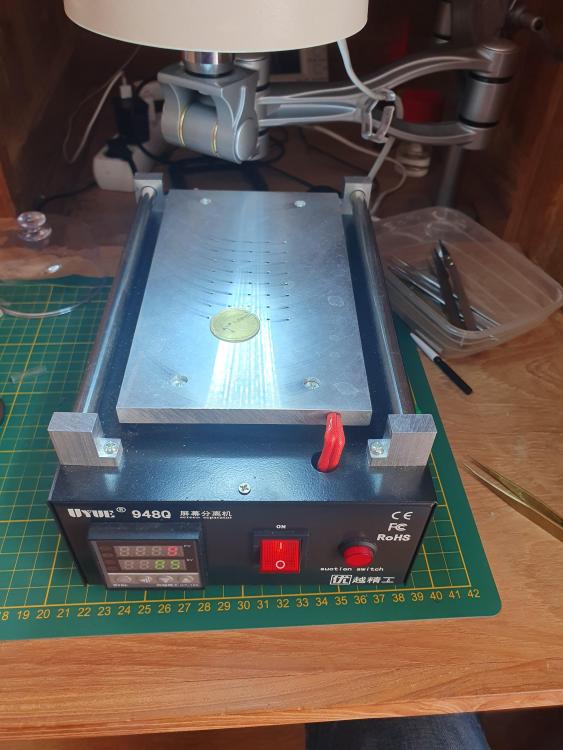
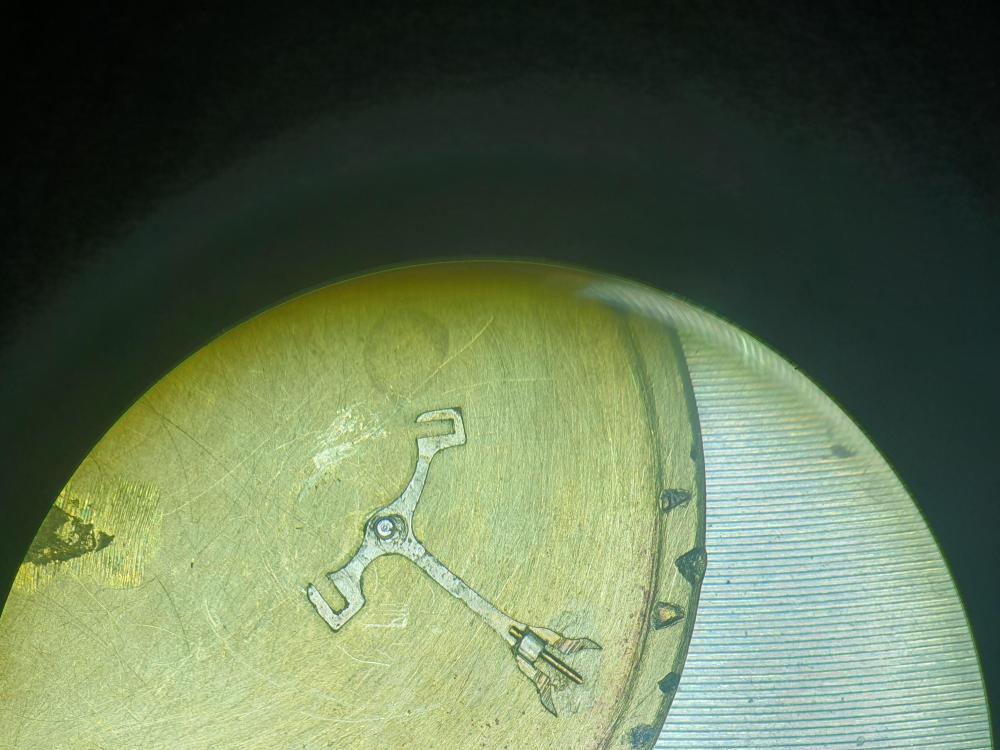

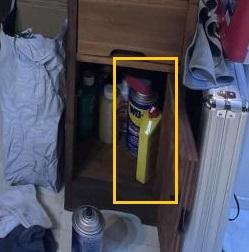







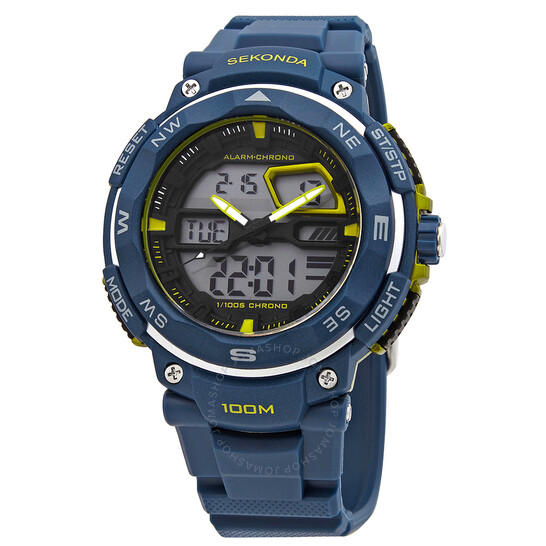

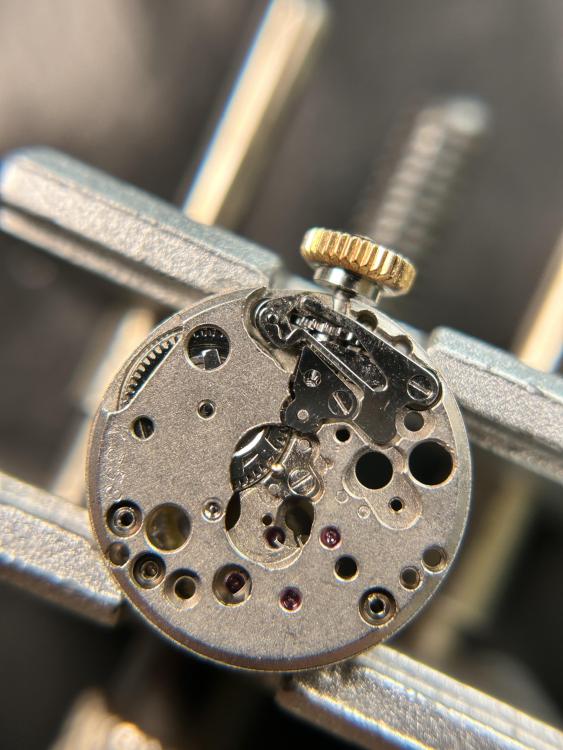
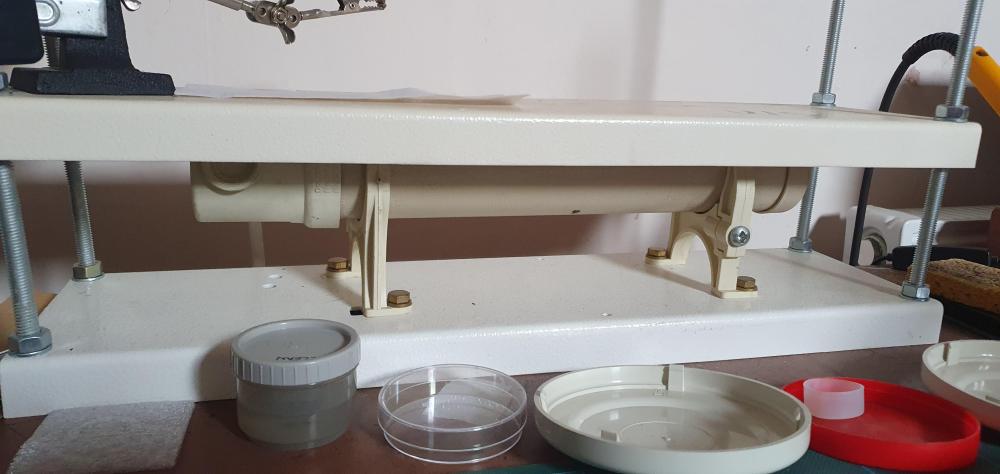




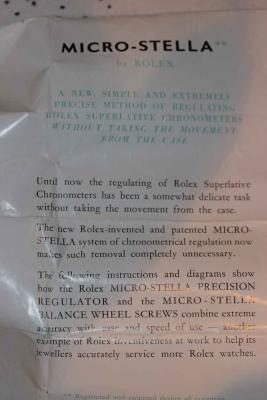
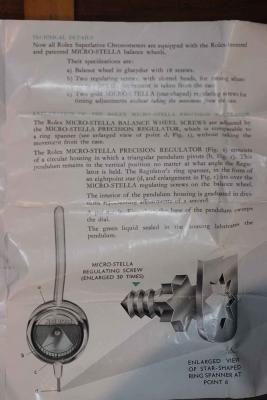
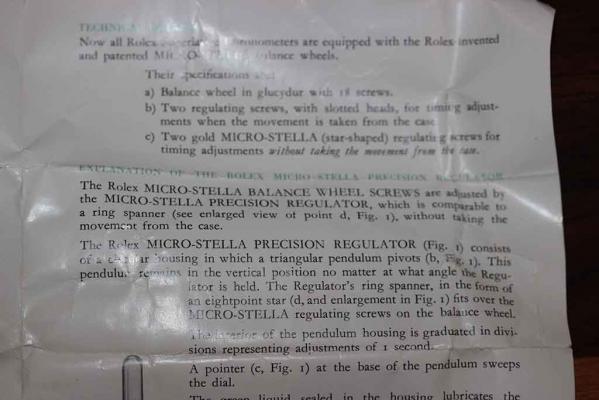
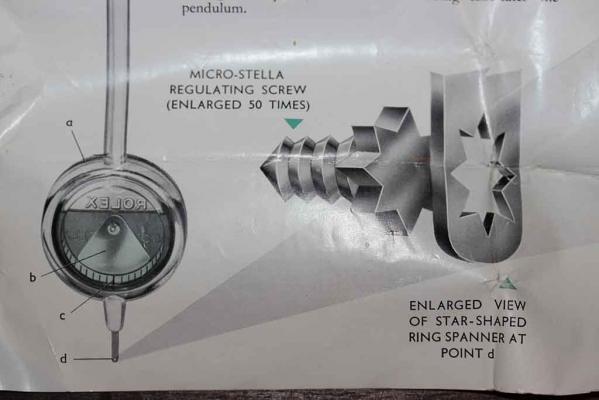
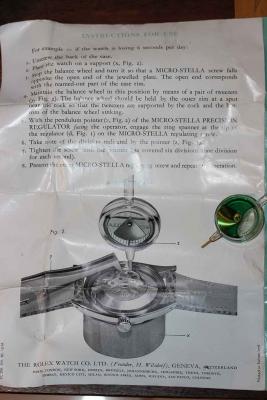
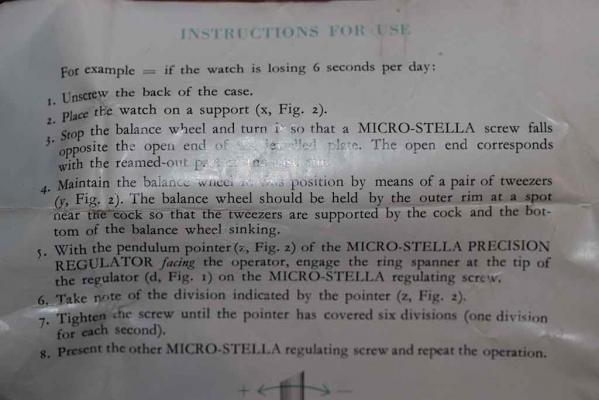
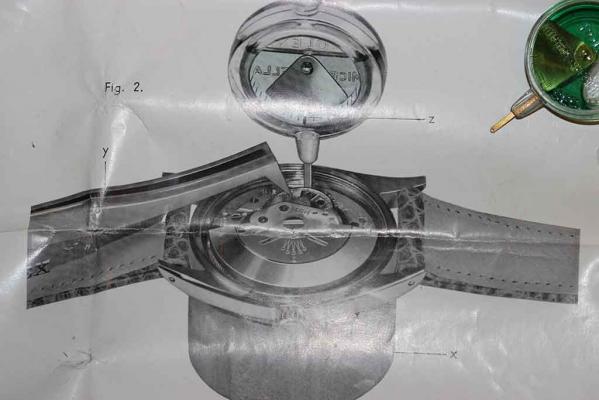
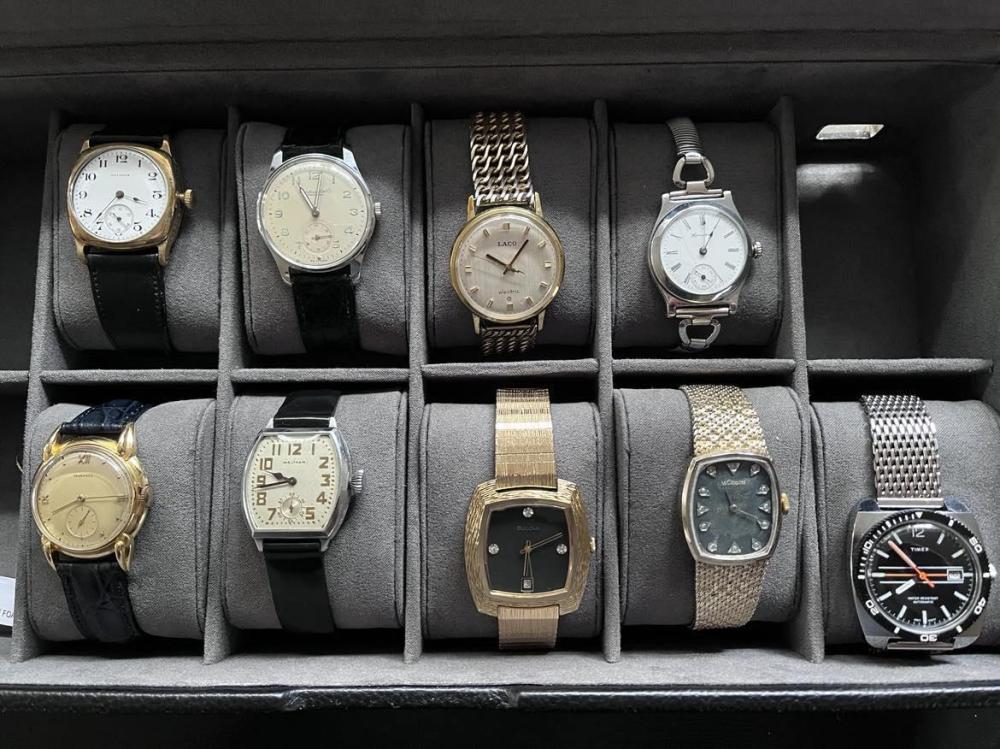
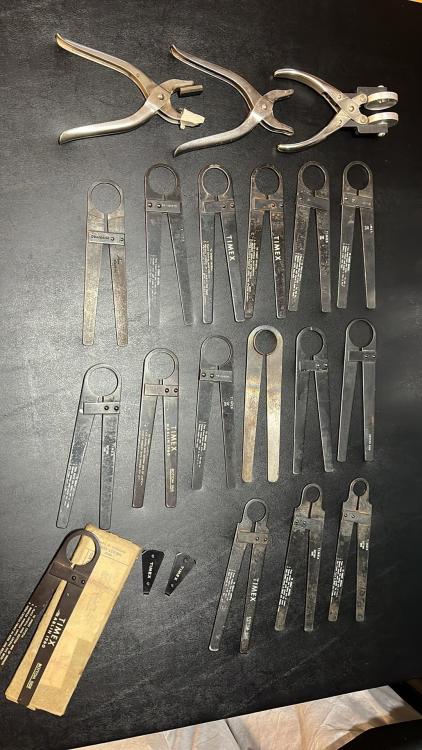
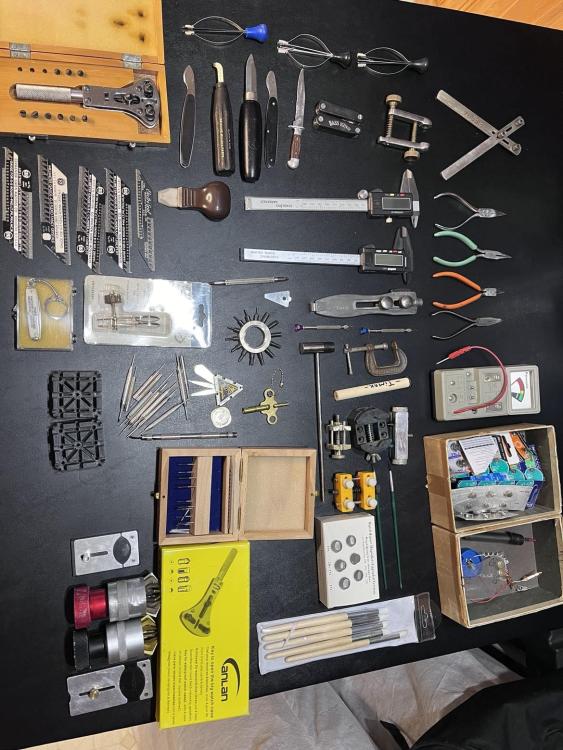
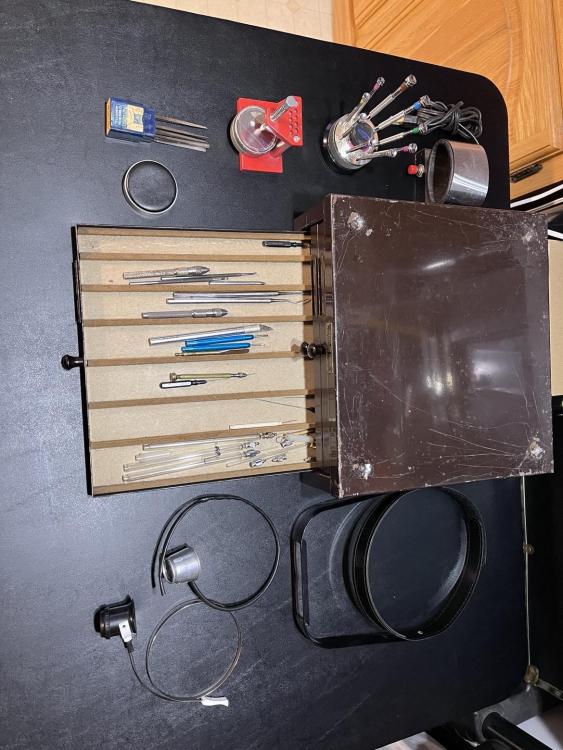
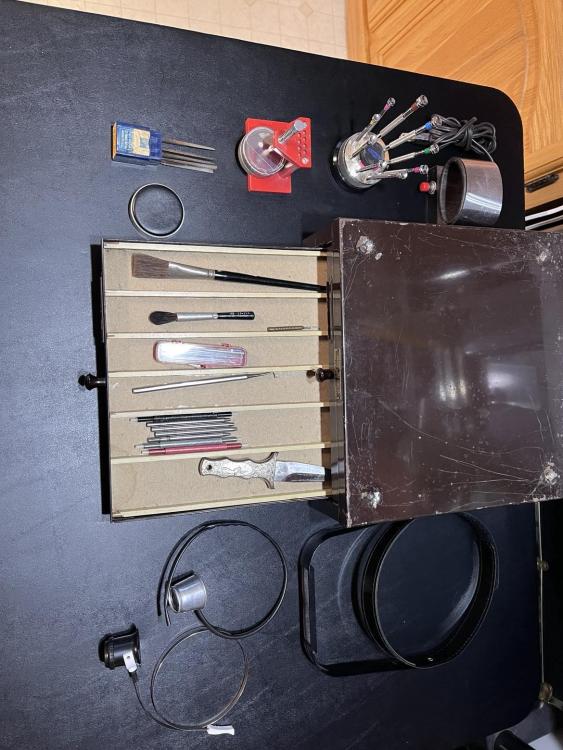


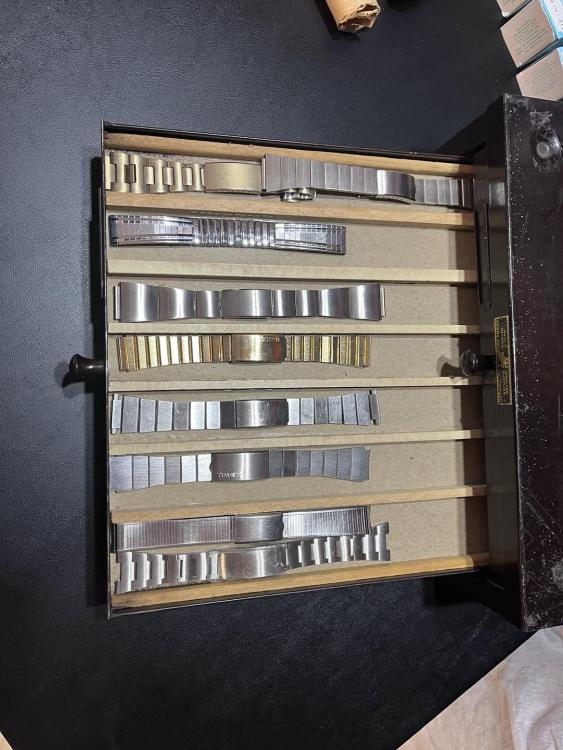

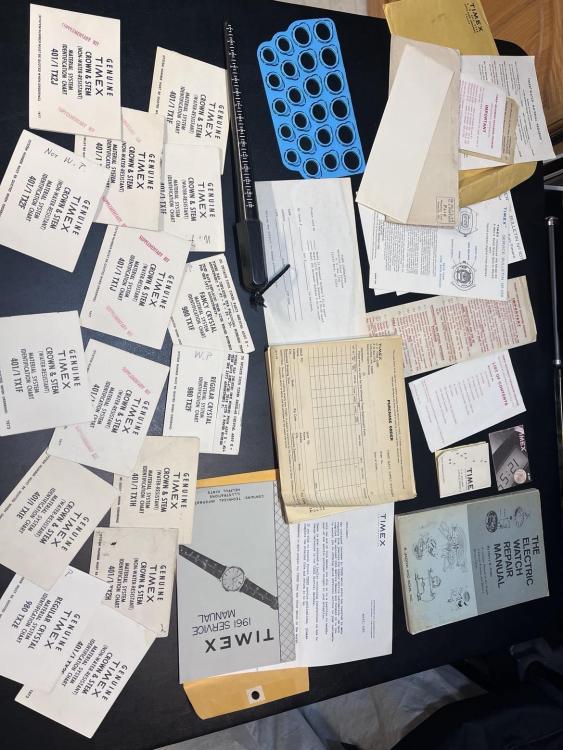
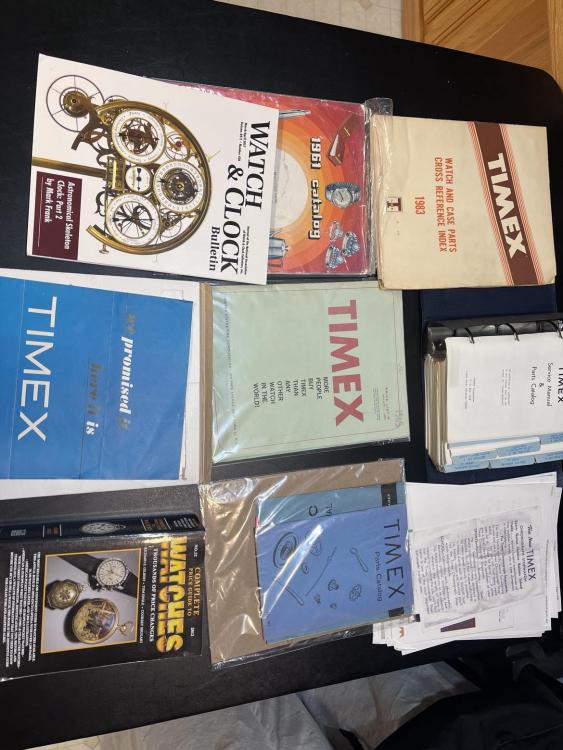
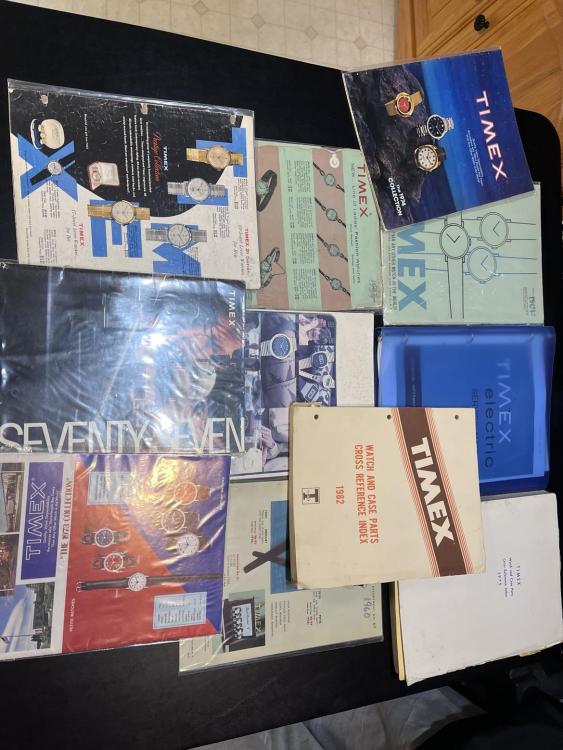
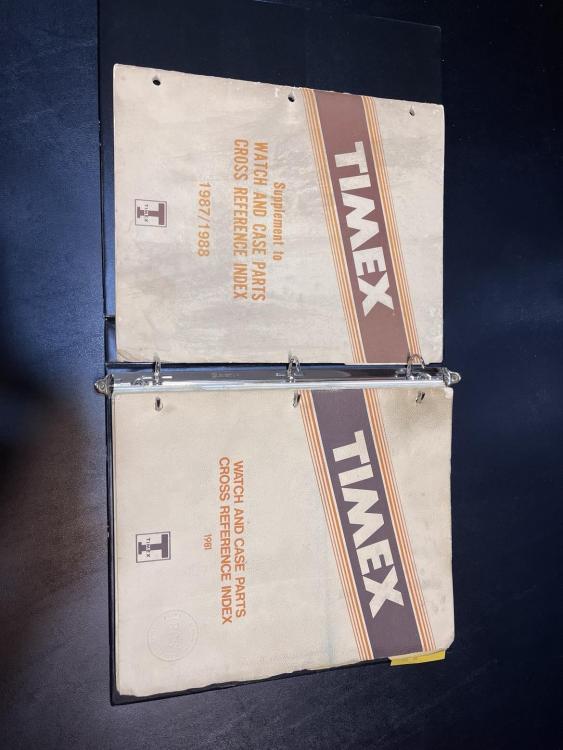
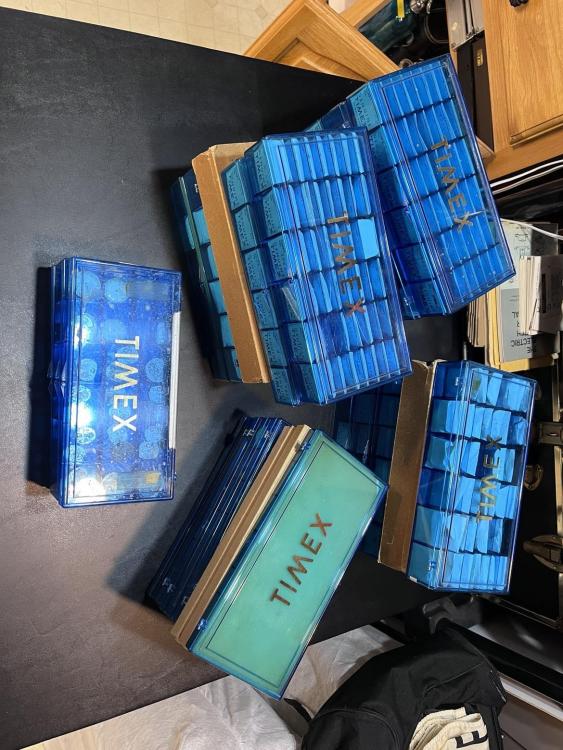
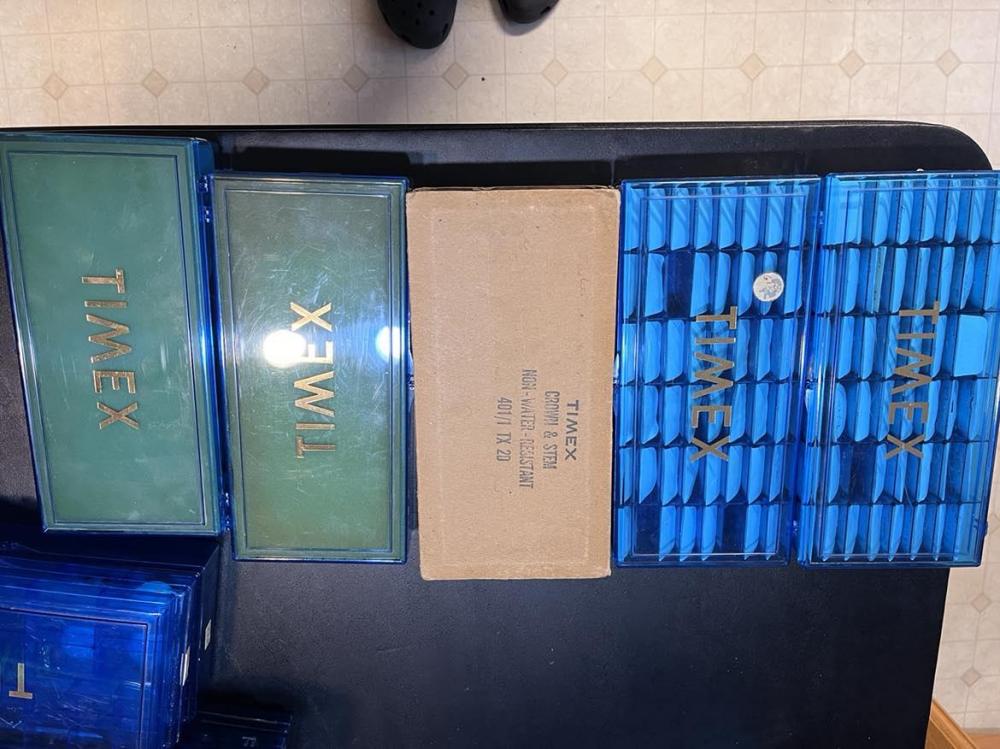
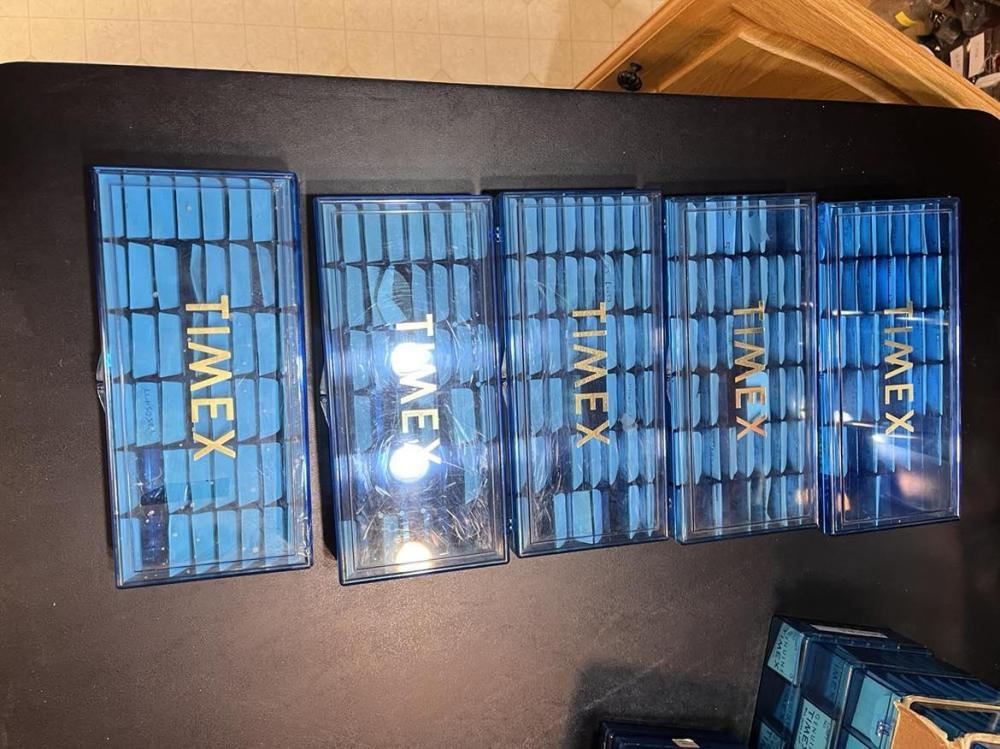
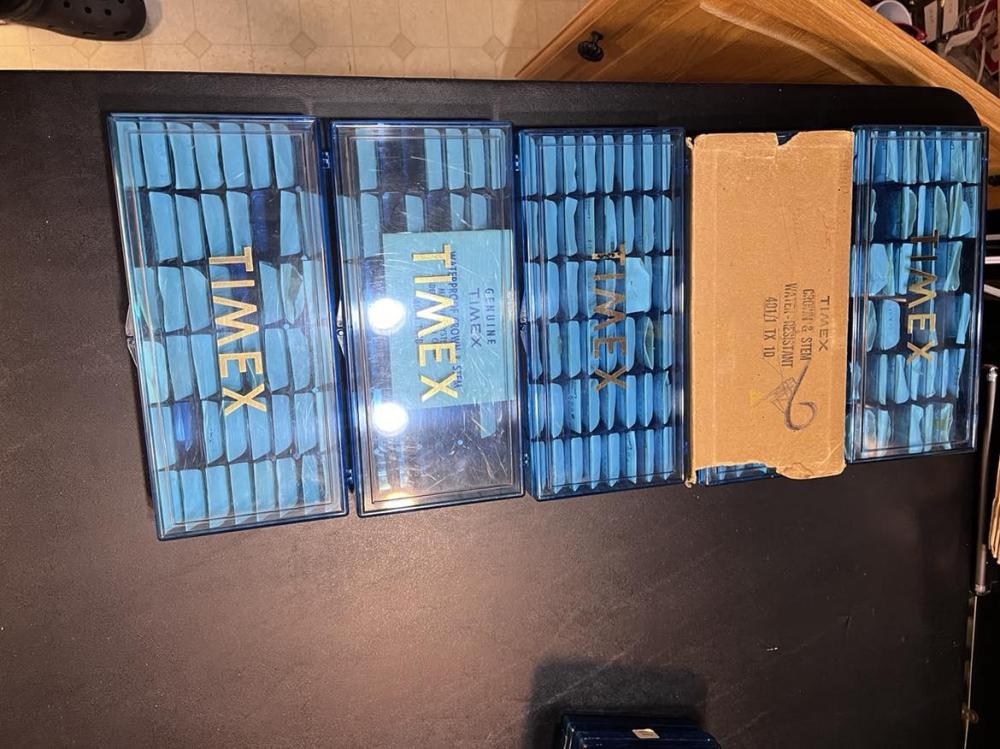
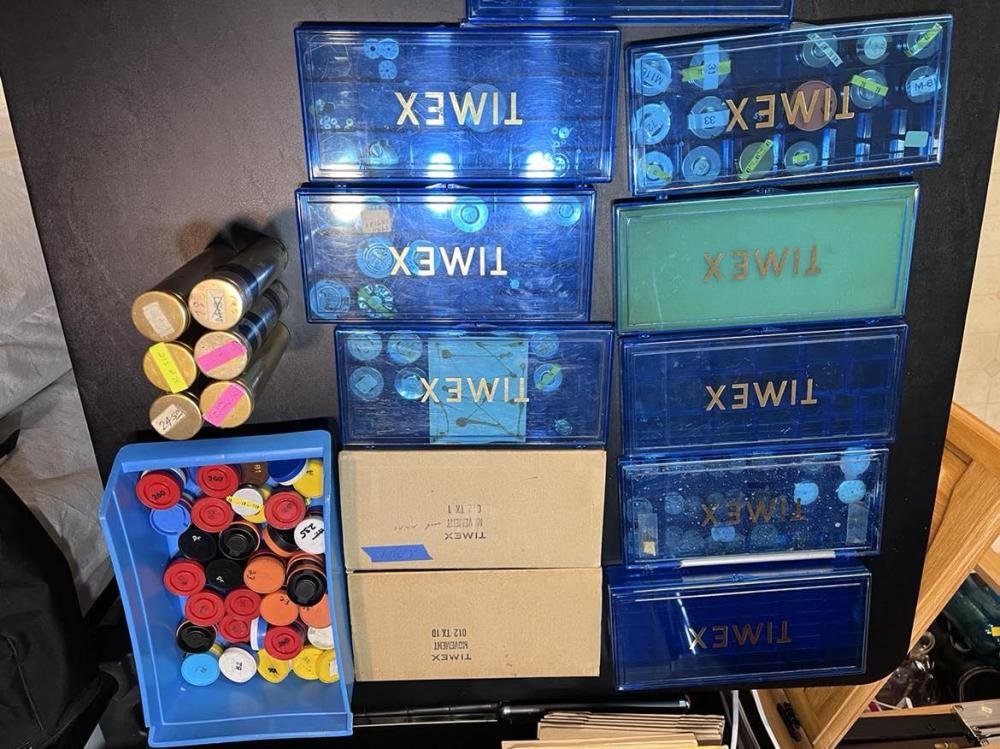



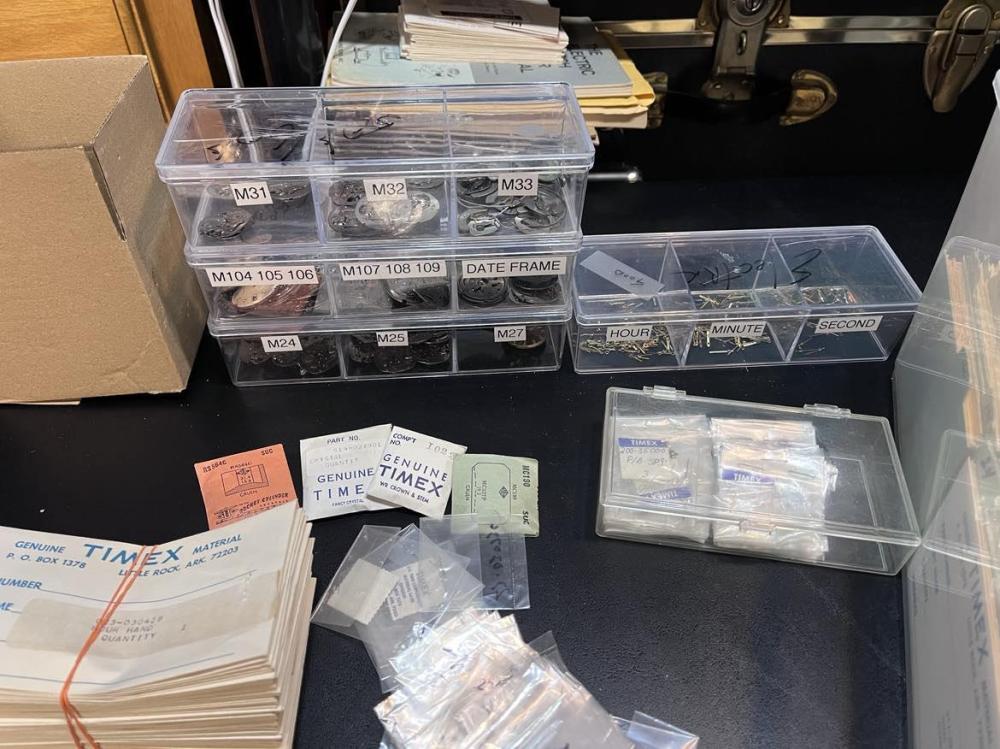
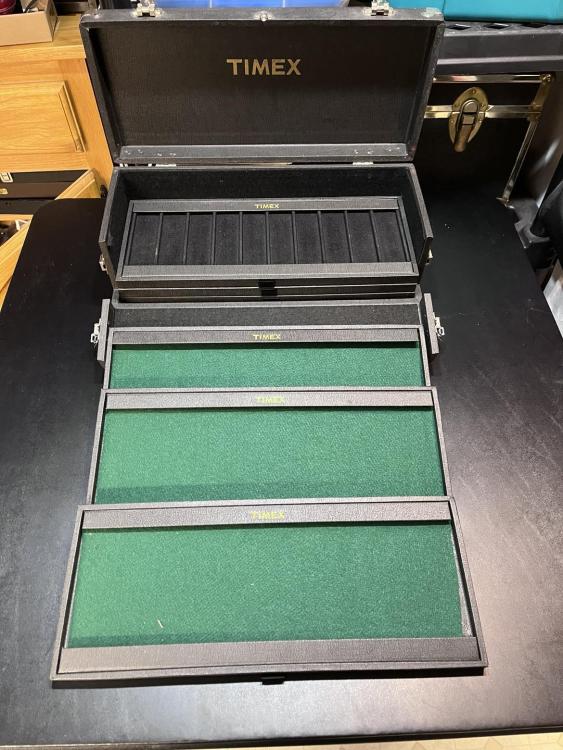

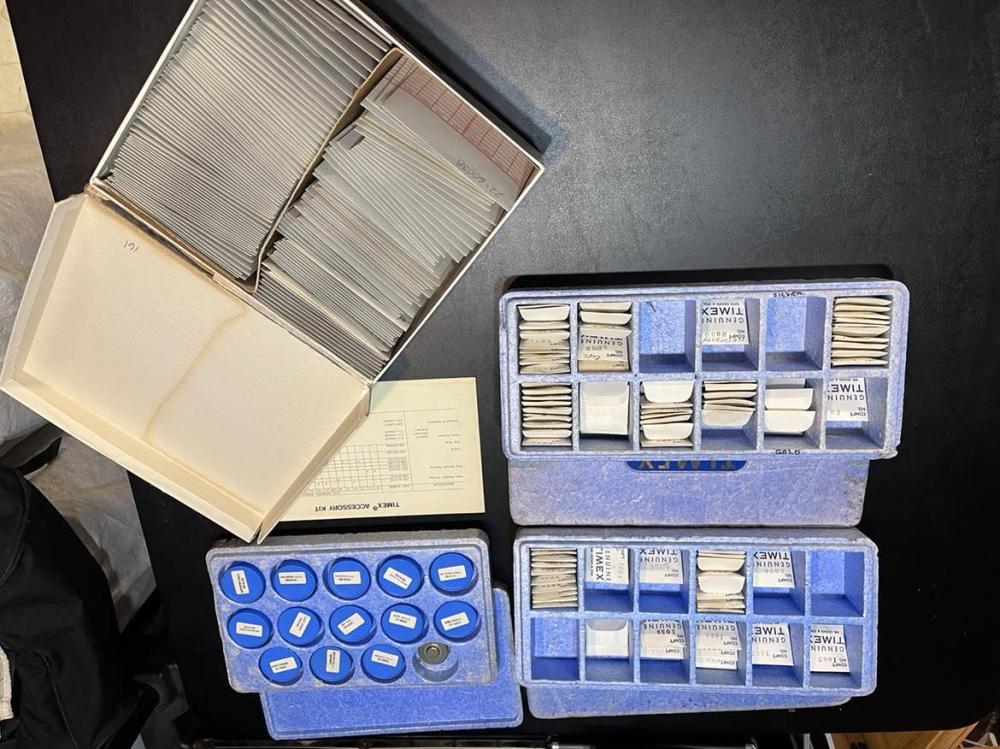
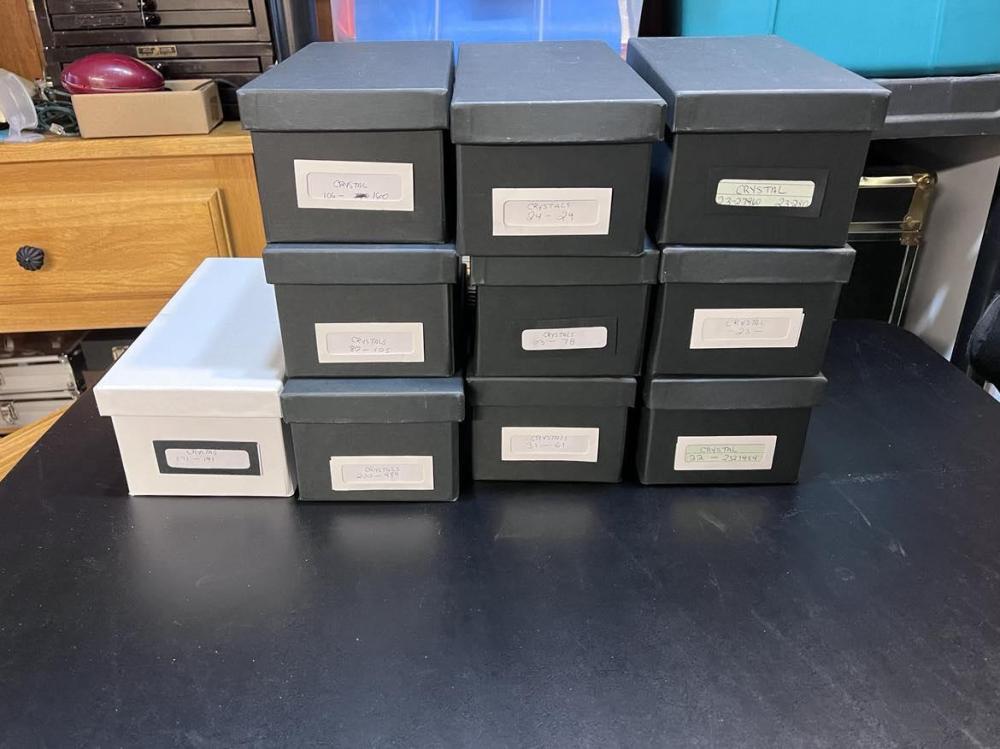
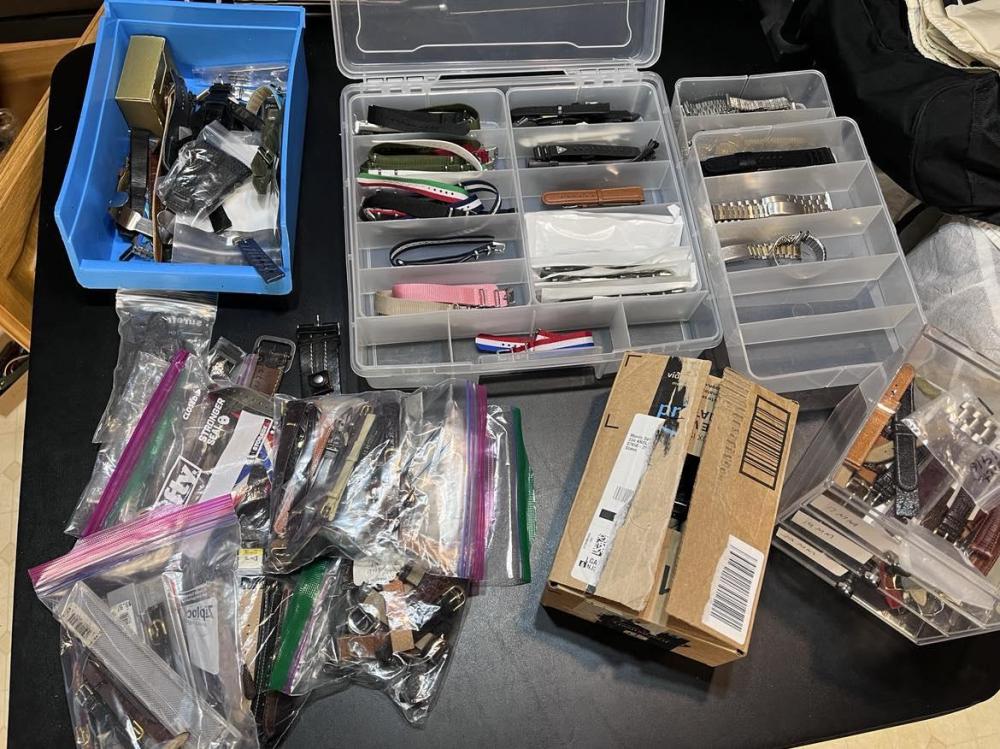
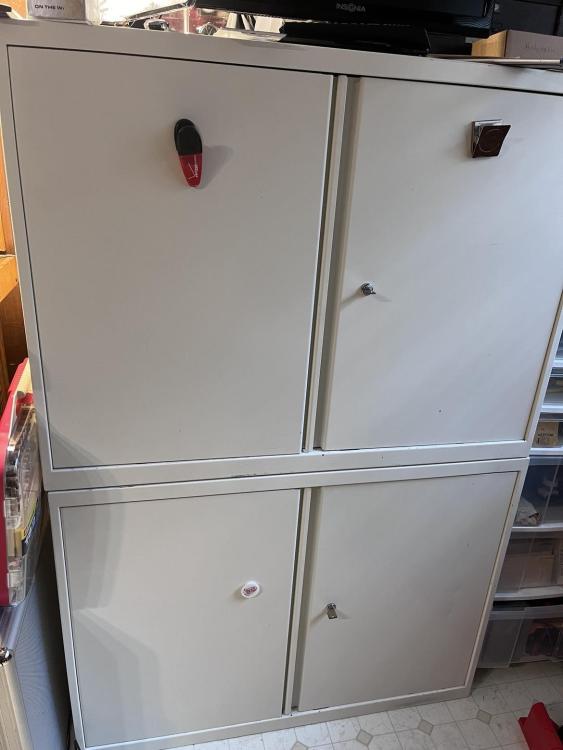
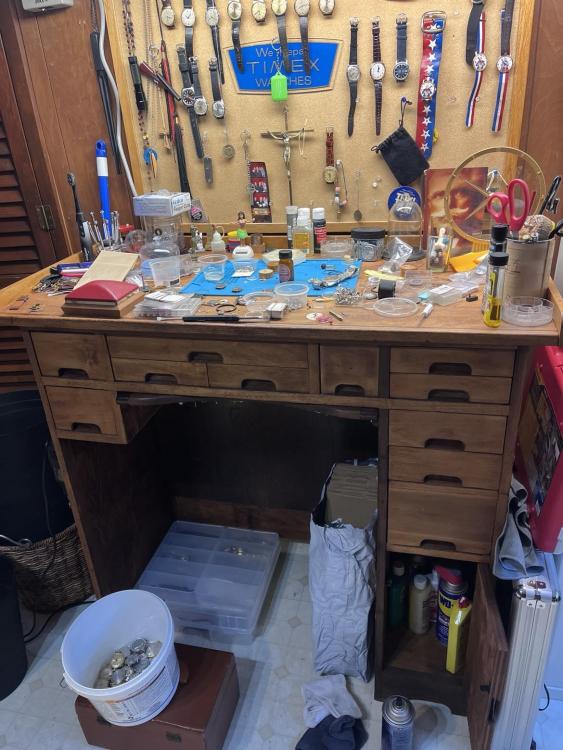

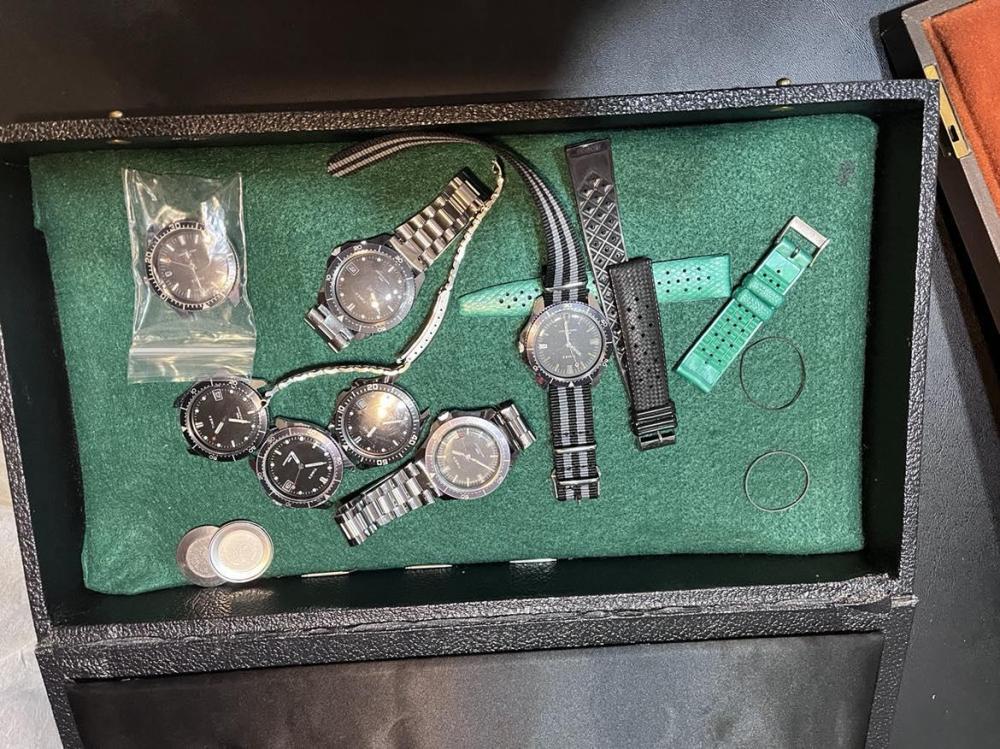

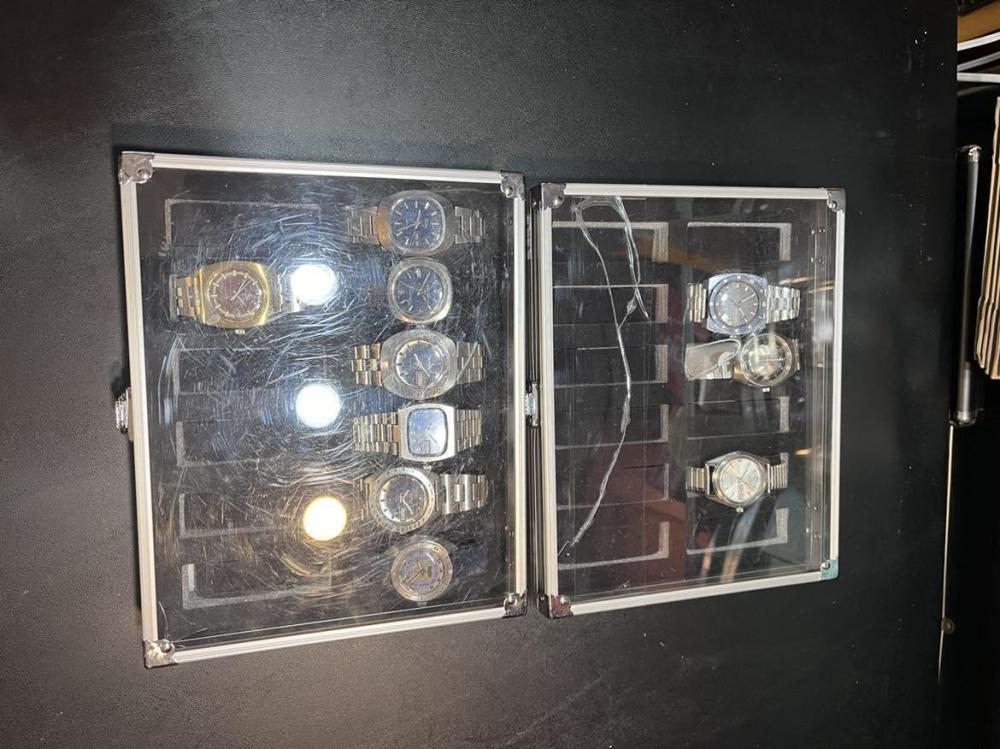
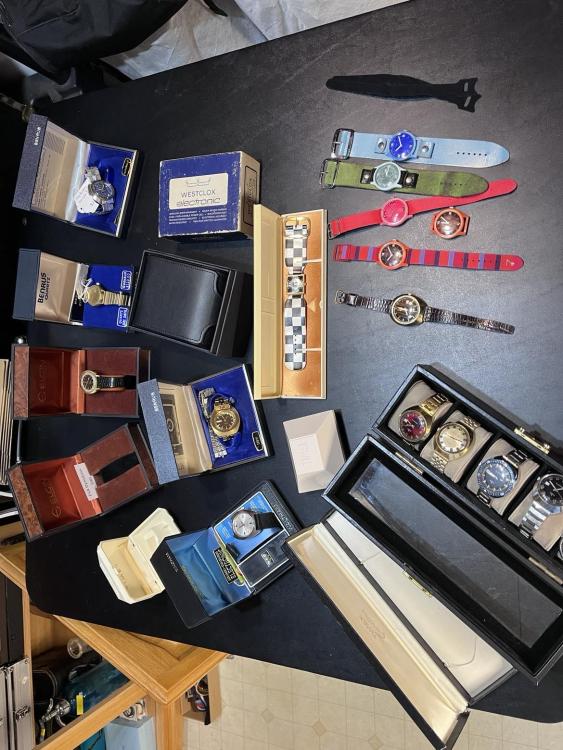
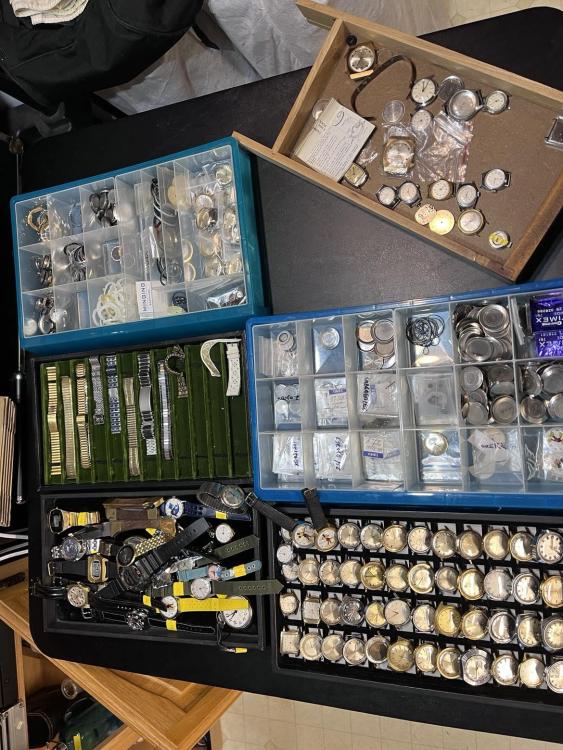
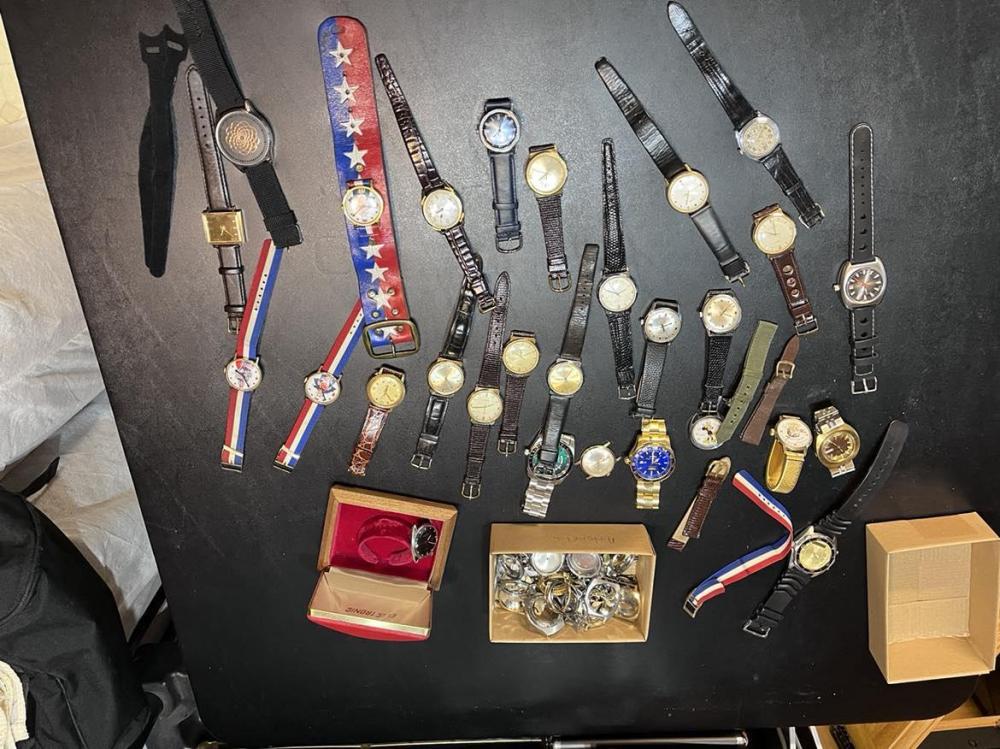
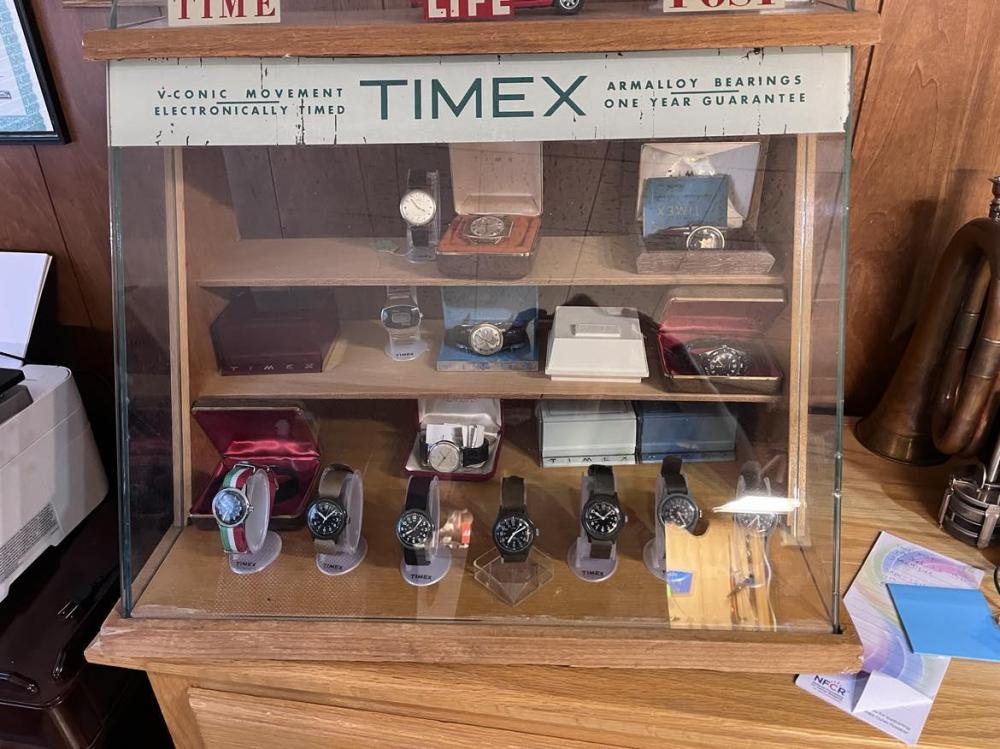

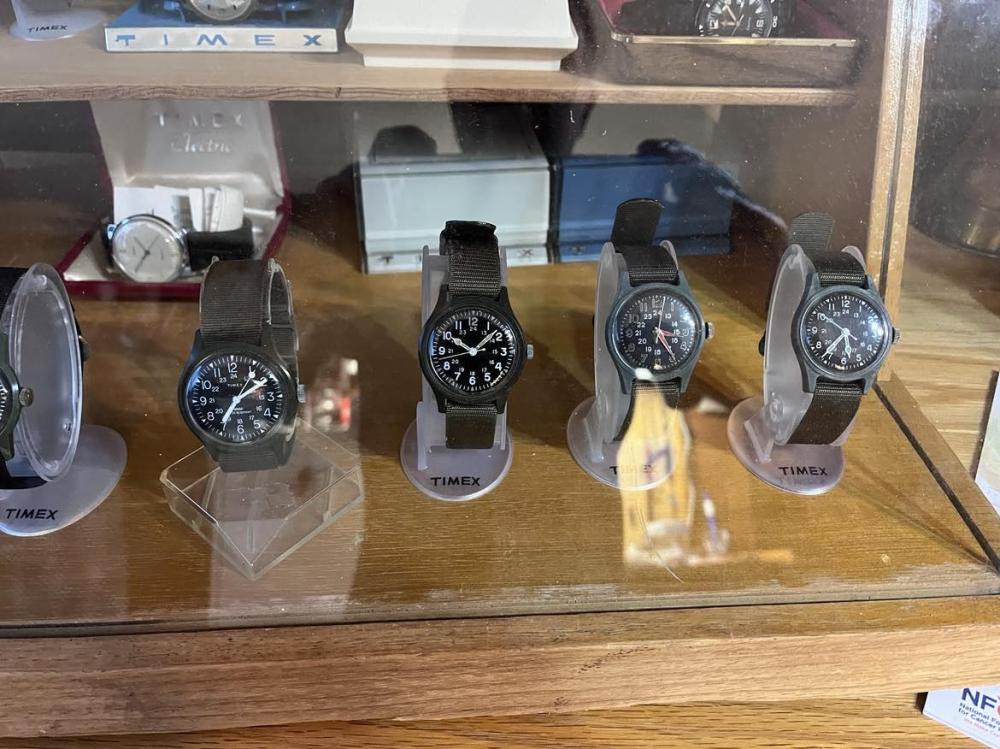
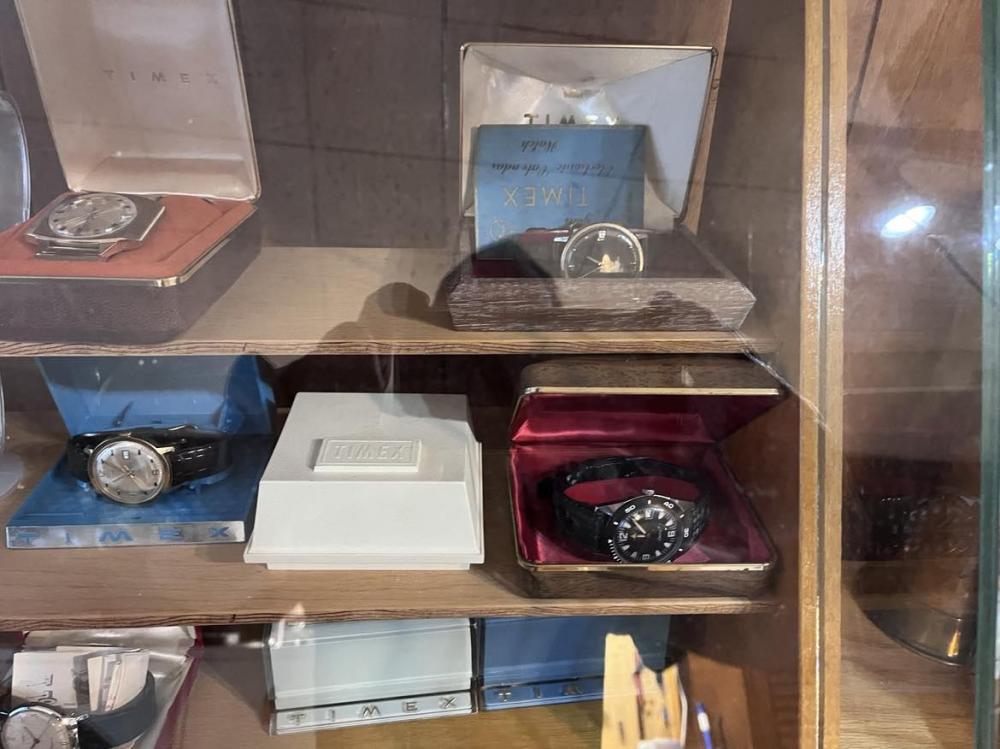
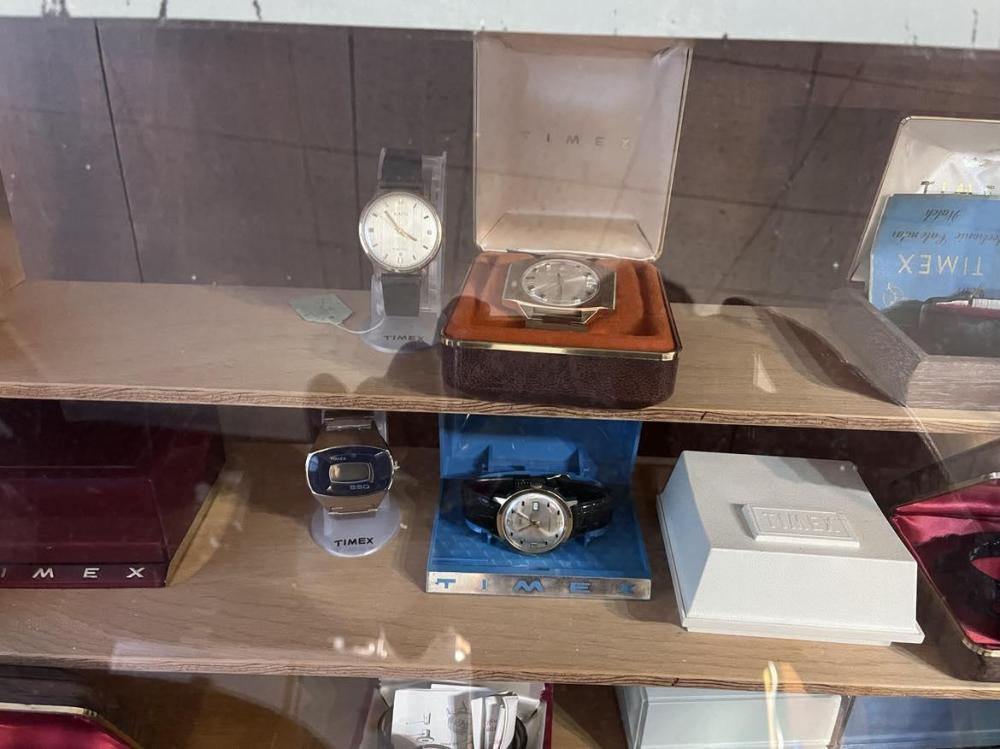
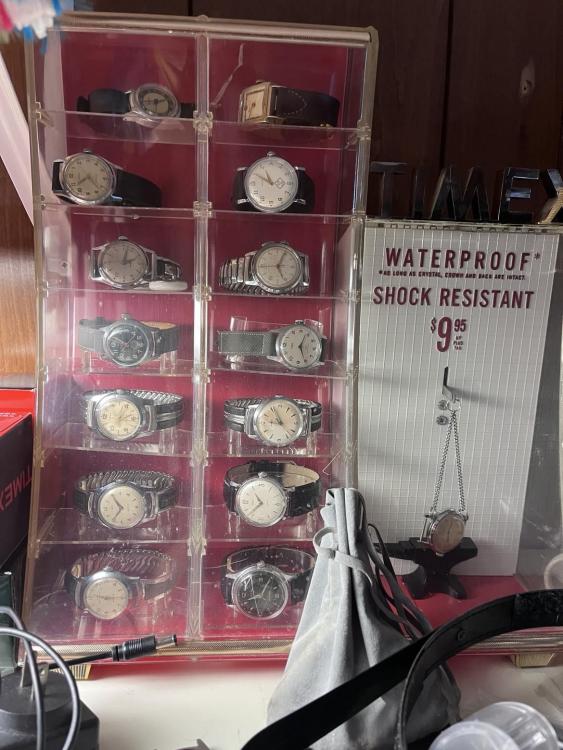
.thumb.jpg.367950bcb9d426106211b903e45dfcd3.jpg)
